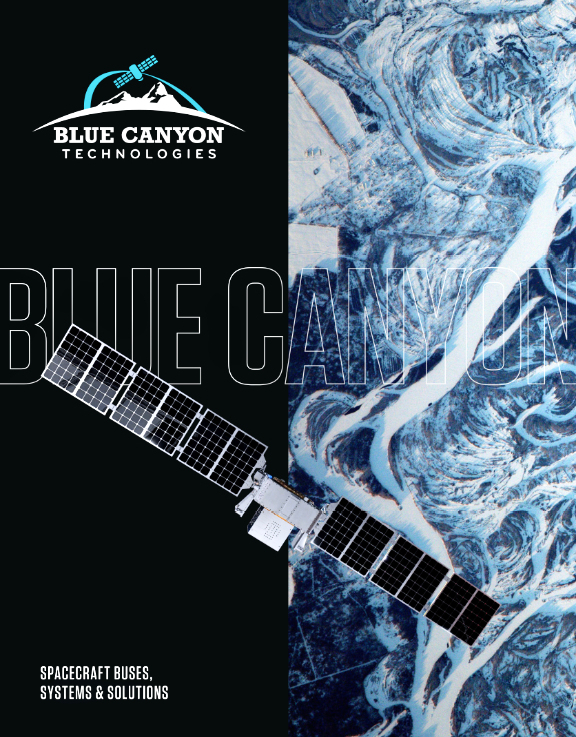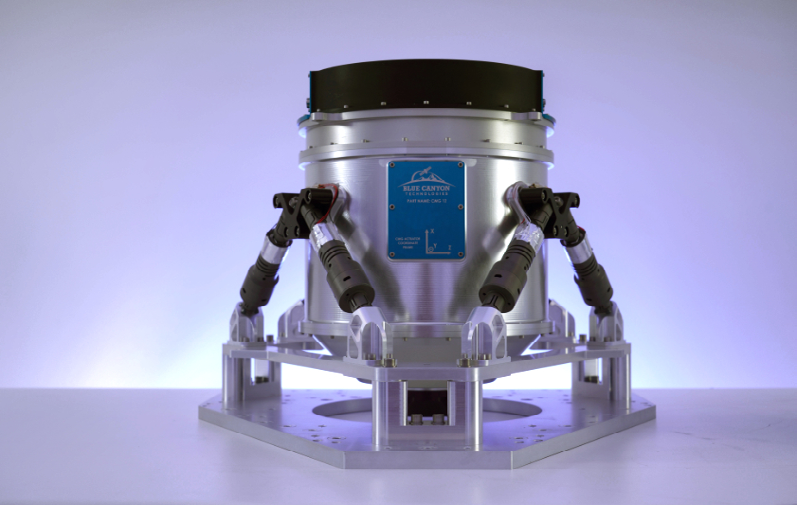Game changing capabilities for smallsat missions
Innovation is at the forefront of the small satellite (smallsat) industry. With innovation comes improved technical capabilities, increased demand and higher output. No longer are space missions dependent on large, costly satellites that take a long time and funding to build, test and launch.

Many large satellite systems are being replaced with sophisticated and highly capable smaller satellites that are typically the size of a toaster, sometimes even smaller. Blue Canyon Technologies, “BCT” or “Blue Canyon,” is at the forefront of this innovation, advancing smallsat attitude control with the release of the company’s Control Moment Gyroscope (CMG) that inaugurates the CMG product line and continues a history of developing and delivering high-performance, small spacecraft components.
Founded in 2008, Blue Canyon built its reputation on performance-proven components, with more than 100 star trackers and 500 reaction wheels flown on-orbit to date. As a wholly-owned subsidiary of Raytheon Technologies integrated into Raytheon Intelligence & Space, Blue Canyon is an end-to-end spacecraft company.
Equipped with new, dedicated facilities and staff for each business unit as well as in-house production resources, the company can expand its customer base and continue providing enhanced solutions, such as the CMG, to support all types of missions — regardless of a mission’s size or scope.
Blue Canyon developed, qualified and completed gimbal life testing of the CMG in April of 2022. The company used its knowledge and long history of leading reaction wheel technology to ensure the CMG offers increased torque performance at lower power consumption.
The CMGs provide long life, high-control accuracy and low-induced vibration performance required for demanding precision-pointing missions.
Blue Canyon is currently offering the CMG12, which has 12-Newton-meter-second rotor momentum and 12Nm of output torque. It is designed using a radiation-hardened parts paradigm and is provided in fully redundant and single-string configurations to meet the risk tolerance and mission length needs of various markets.
The vibration and jitter isolation are integrated into each CMG, with the control electronics as a separate unit. The company’s offering provides new and unique capabilities not made previously available for smallsats. This added performance can achieve more payload-pointing operations, such as Earth imaging, while on-orbit.
A CMG8 product is being designed in cooperation with a Defense Production Act, or DPA, Title III program and will expand Blue Canyon’s CMG product line with a flight-qualified design compatible with smaller, microsat-class spacecraft.
The CMG8 offers 8Nms of momentum and 8Nm of output torque and leverages BCT’s latest- generation, radiation-tolerant, commercial parts strategy to achieve high performance with a desirable price and lead time.
The CMG12 system has completed a full qualification test campaign, with following flight units completing acceptance testing. An ongoing life test has already achieved an accelerated, full gimbal life of 10 years and a rotor life of more than one year.
Pre-and post-induced vibration, or jitter, measurements, were conducted and they demonstrated that the unit maintains excellent jitter performance. The agility offered by CMGs reduces maneuver times by a large multiplier without requiring more power or compromising pointing performance.

Photo of a Blue Canyon CMG, courtesy of the company
Blue Canyon’s highly experienced technical team is working to integrate this CMG technology with its existing turnkey bus offerings in order for a wide variety of missions being able to access the capabilities of CMG-actuated spacecraft. These platforms will provide increased performance, low-cost, high-reliability CMG-based solutions designed for high-volume production in response to space mission needs that support civil, NASA, commercial, and Department of Defense (DoD) satellites.
For missions that measure success by the volume of data collection or other metrics rooted in agility, CMGs provide a quantum leap in mission value. Blue Canyon continues to witness tremendous customer interest and expects this product to transform several classes of smallsat missions in the coming years.

Matt Carton
Author Matt Carton is the Executive Director of Component Development at Blue Canyon Technologies.
In this role, he is responsible for the technology roadmap and qualification of the company’s spacecraft component product lines. During the past nine years, Matt has helped develop numerous components that have included Blue Canyon’s heritage Reaction Wheels and Control Moment Gyroscopes, where he primarily served as technical lead and motor designer. Prior to joining Blue Canyon, Matt worked as research assistant for the Laboratory of Atmospheric and Space Physics, supporting the NASA EVE sounding rocket and MinXSS cubesat development.
Matt holds a Bachelors in Mechatronics Engineering from California State University Chico and a master’s in electrical engineering from the University of Colorado at Boulder.
bluecanyontech.com


